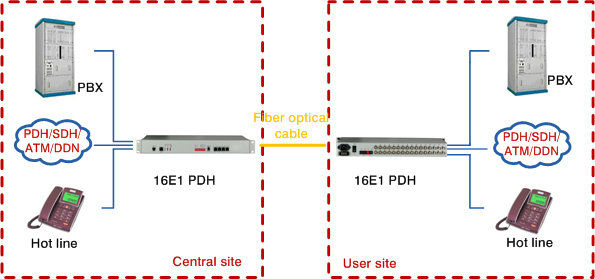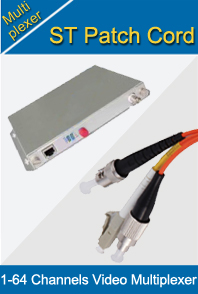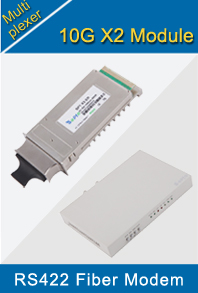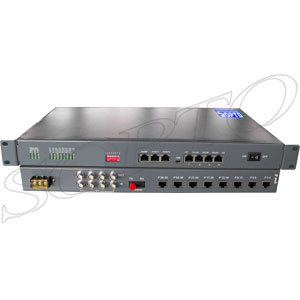-

- Sopto Home
-

- Special Topic
-

- Multiplexer Knowledge
-

- What is Concept of Multiplexing in Telephone System?
Multiplexer Knowledge
- Why is Multiplexing Needed in Data Communication Systems?
- What is Concept of Multiplexing in Telephone System?
- What is Digital TV Frequency?
- Outlook of the WDM Networks
- DWDM Technical Overview
- CWDM Technical Overview
- How to Activate Cable Modems?
- How to Install a Fiber Optic Modem?
- How do I Choose a Best Fiber Modem?
SOPTO Special Topic
Certificate



Guarantee
Except products belongs to Bargain Shop section, all products are warranted by SOPTO only to purchasers for resale or for use in business or original equipment manufacturer, against defects in workmanship or materials under normal use (consumables, normal tear and wear excluded) for one year after date of purchase from SOPTO, unless otherwise stated...
Return Policies
Defective products will be accepted for exchange, at our discretion, within 14 days from receipt. Buyer might be requested to return the defective products to SOPTO for verification or authorized service location, as SOPTO designated, shipping costs prepaid. .....
Applications
Multiplexers can be used to connect PBX, Hot line and other devices of network from central site to user site through fiber optical cable.
SOPTO Products
- Fiber Optic Transceiver Module
- High Speed Cable
- Fiber Optical Cable
- Fiber Optical Patch Cords
- Splitter CWDM DWDM
- PON Solution
- FTTH Box ODF Closure
- PCI-E Network Card
- Network Cables
- Fiber Optical Adapter
- Fiber Optical Attenuator
- Fiber Media Converter
- PDH Multiplexers
- Protocol Converter
- Digital Video Multiplexer
- Fiber Optical Tools
- Compatible
Related Products
Performance Feature
High integration desig
Low power consumption
Good EMC, EMI
Stable and Reliable
Multiplexer Knowledge
Recommended


What is Concept of Multiplexing in Telephone System?
Multiplexing is a form of data transmission in which one communication channel carries several transmissions at the same time. The telephone lines that carry our daily conversations can carry thousands or even more of conversations at a time using multiplexing concept. The exact number of simultaneous transmission depends on the type of communication channel and the data transmission rate.
Economics of scale play an important role in the telephone system. It costs essentially the same amount of money to install and maintain a high-bandwidth trunk as low-bandwidth trunk between two switching officers. Consequently, telephone companies have developed elaborate schemes for multiplexing many conversations over a single physical trunk.
Accordingly, the communication channel is shared in such a way as to maximum the utilization of the channel capacity. Thus the method of dividing a single channel into many channels so that a number of independent signals may be transmitted on it is known as Multiplexing.
Multiplexing schemes can be divided into two basic categories:
- Frequency Division Multiplexing FDM
- Time Division Multiplexing TDM
Frequency division multiplexing (FDM) is the technique used to divide the bandwidth available in a physical medium into a number of smaller independent logical channels with each channel having a small bandwidth. The method of using a number of carrier frequencies each of which is modulated by an independent speech signal is in fact frequency division multiplexing.
Frequency-division multiplexing works best with low-speed devices. The frequency division multiplexing schemes used around the world are to some degree standardized. A wide spread standard is 12 400-Hz each voice channels ( 300Hz for user, plus two guard bands of 500Hz each) multiplexed into the 60 to 108 KHz band. Many carriers offer a 48 to 56 kbps leased line service to customers, based on the group. Other standards upto 230000 voice channels also exist.
Advantages of FDM
- Here user can be added to the system by simply adding another pair of transmitter modulator and receiver domodulators.
- FDM system support full duplex information flow which is required by most of application.
- Noise problem for analog communication has lesser effect.
Disadvantages of FDM
- In FDM system, the initial cost is high. This may include the cable between the two ends and the associated connectors for the cable.
- In FDM system, a problem for one user can sometimes affect others.
- In FDM system, each user requires a precise carrier frequency.
Time Division Multiplexing (TDM) is another popular method of utilizing the capacity of a physical channel effectively. Each user of the channel is allotted a small time interval during which is may transmit a message. Thus the total time available in the channel is divided and each user is allocated a time slice. In TDM, user send message sequentially one after another.
Each user can, however, use the full channel bandwidth during the period he has control over the channel. The channel capacity is fully utilized in TDM by interleaving a number of messages belonging to different users into one long message. This message sent through the physical channel must be separated at the receiving end.
Unfortunately, TDM can only be used for digital data multiplexing. Since local loops produce analog signals, a conversion is needed from analog to digital in the end office.
Advantages of TDM
It uses a single links
It does not require precise carrier matching at both end of the links.
Use of capacity is high.
Each to expand the number of users on a system at a low cost.
There is no need to include identification of the traffic stream on each packet.
Disadvantages of TDM
The sensitivity to other user problem is high
Initial cost is high
Technical complexity is more
The noise problem for analog communication has greater effect.
Sopto supplies high quality Video + Data Multiplexer, Video + Audio Multiplexer and other multiplexers for network signal transmission. For the newest quotes, please contact a Sopto representative by calling 86-755-36946668, or by sending an email to info@sopto.com. For more info, please browse our website.




